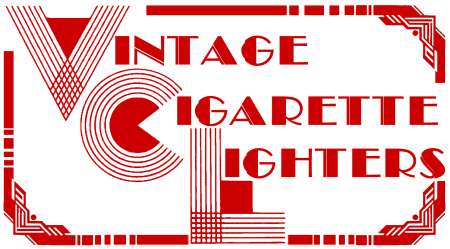Evans Lighters
Order of Evans Lighters: Lift Arm (mid-1920s - early 1930s) - Automatic (introduced c. 1929) - Roller Bearing (c. 1929 - 1934) - Trig-A-Lite (c. 1934 - 1940) - "Spitfire (c. 1940) - Clipper (c. 1940) - Banner (c. 1940) - Supreme (a taller version of the Banner c. 1940) - Tube - Petite (a very short version of the Banner c. 1940) - Esquire (late 1950s) - Breeze King (mid 1950s). The Oval style was produced in Roller Bearing, Trig-A-Lite, and Spitfire models.
The Evans Company first started out as a handbag and accessory manufacturing company, originating from Attleboro, Massachusetts as a novelty company in 1918. However, by the late 1920’s, the company took on a different path and began to manufacture lighters with a “lift arm system”. This system is very similar to the one used by the Alfred Dunhill Company – minus the fact that the flint wheel was located vertically, rather than horizontally. Many lighters were manufactured by the Evans Company with this “lift arm system” with a variety of attractive styles, including enameled cases. In addition, the Evans Company produced complementary cigarette cases and perfume sprays.
Soon after, the “lift arm system” began to lose popularity with the onset of a new lighter system – the Ronson system, which was clearly more user-friendly. Another version of the Ronson system was launched by the Evans Company, called the Trig-A-Lite. However, the Ronson Company noticed the similarities between the two systems and ultimately filed a lawsuit against the Evans Company for copyright issues. The lawsuit continued on for several years, until the Ronson Company finally won and received their settlement from the Evans Company.
In the 1940’s and 1950’s, the Evans Company was known to manufacture a large variety of decorative lighters. These uniquely shaped lighters were adorned with enameled bases and were even available in the shapes of different fruits. The interior of the lighter was the same for all the models. The uniform lighter unit was useful because it was able to fit in any sort of shape and design, and thus it was utilized for many years to come. As times changed, the old system was replaced with butane. The Evans Company introduced a butane system in the same size as the original decorative bases to facilitate the change. The Evans Company continued to manufacture lighters into the early 1970’s.
PRIMARY SOURCE: http://www.cigarette-lighter.net/evans-lighter/
|

